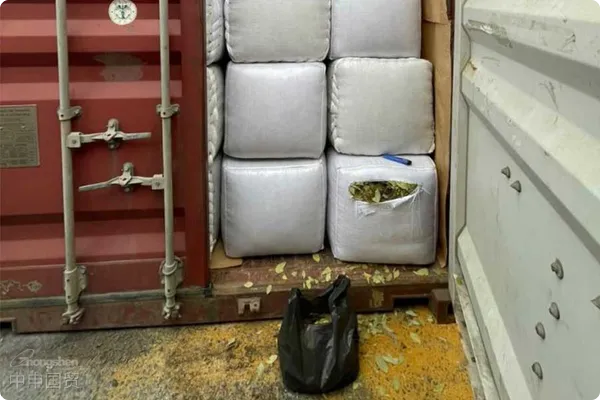- Shanghai Zhongshen International Trade Co., Ltd. - Two decades of trade agency expertise.
- Service Hotline: 139 1787 2118
How to Ensure Smooth Import of Bay Leaves?
Importing bay leaves is a choice for many businesses. However, complex customs procedures and strict regulatory requirements make bay leaf imports quite challenging. So, how to ensure smooth customs clearance of bay leaf imports while complying with Chinas relevant regulations and food safety standards? This article will detail the key steps and essential documents for bay leaf imports, helping you easily address various issues in the import process.

I. Access Requirements
Admission Requirements
Country Access
First, you need to confirm whether the exporting country of bay leaves is on Chinas list of permitted import countries for bay leaves. This can be done by checking the official website of Chinas General Administration of Customs. For example, if the bay leaves are from Georgia, you need to ensure Georgia is on Chinas access list.
Enterprise Access
Not just the country, but exporters and importers also need to complete registration in their respective countries. Exporters must register with Chinas General Administration of Customs, while importers need to register with their local customs. This step ensures the legal identity and qualifications of both parties, helping to avoid unnecessary troubles during the import process.
II. Required Documents
Essential Documents
Commercial Documents
- List in detail the model, product name, number of pieces, weight, etc. of the goods.A detailed list of the contents of each package, facilitating customs inspection.
- Contract:A transaction contract between the importer and exporter, proving the legality of the transaction.
- Invoice:Documentation proving the transaction amount.
- Bill of Lading:Receipt confirmation from the shipping company.
Official Certificates
- Certificate of Origin:Proof of the production location of the bay leaves.
- Phytosanitary Certificate:Proof that the bay leaves are free from pests and diseases, meeting plant quarantine requirements.
- Composition Report:List the detailed composition of bay leaves to ensure compliance with food safety standards.
- Food Distribution License:Certifies that the importer is qualified to sell food products.
- Chinese Label:Ensure Chinese labeling on product packaging that complies with Chinas labeling regulations.
Special Documents
For bay leaves from certain specific countries, specific grade reports may be required to verify the grade declared on the customs declaration. These reports help customs quickly determine the quality and value of the bay leaves.
Filing Information
- import and exportBusiness License:Certifies that the importer has legal import and export rights.
- Consignee/Consignor Filing Number:Ensures the importer is registered with customs.
- Phytosanitary Certificate:Provided when necessary to certify the safety of bay leaves.
III. Import Process
Import Process
Confirm the nature of the goods:
- Verify the export country and enterprises market access eligibility.
- Prepare all required documents to ensure nothing is missed.
Goods Transportation
The foreign supplier prepares the goods and arranges transportation while preparing export customs documents. Ensure the safety and integrity of the goods during transit.
Before Arrival
Apply for an Entry Goods Clearance Certificate and prepare all documents in advance to avoid delays in customs clearance due to incomplete paperwork upon arrival.
After Arrival
Pay freight charges, exchange bills of lading, and conduct import inspection and customs declaration. This is the most critical step in the import process and requires special attention.
Tax Processing
Pay tariffs (e.g., 8% import duty) and VAT (e.g., 9%) based on the HS code. If the bay leaves qualify under a trade agreement, provide a Certificate of Origin to enjoy preferential tariff rates.
Inspection and Release
Customs may conduct random or targeted inspections. Upon approval, customs will release the goods for entry into the domestic market.
Follow-up Steps
Obtain the Commodity Inspection Sanitary Certificate and arrange delivery to the final destination. Ensure the goods arrive safely and begin sales.
IV. Precautions
Precautions
Grade Report
If bay leaves are graded, provide an official grade report to avoid customs declaration issues. These reports not only prove product quality but also prevent clearance problems due to unclear grading.
Trade Preferences
Utilize trade agreements to ensure providing correct certificates of origin for tariff reductions. Familiarity with various trade agreements can help you save significant tax costs.
Regulatory Updates
Due to potential policy changes, stay updated on the latest import regulations and requirements. Regularly check announcements from the General Administration of Customs to ensure compliance with current rules.
V. Special Requirements
Special Requirements
Food Safety Standards
Ensure bay leaves meet Chinas food safety standards, which may require sample testing. Preparing relevant test reports in advance can expedite customs clearance.
Communication with Customs and Quarantine Authorities
Importers should maintain good communication with customs and quarantine authorities to ensure smooth procedures. Any issues should be promptly reported and resolved to avoid delays caused by poor communication.
By thoroughly understanding the qualifications and procedures for bay leaf imports, you can ensure compliance with Chinas regulations and smooth market entry. This article aims to provide valuable reference to help you navigate various challenges in bay leaf imports. For further questions or professionalImport Representationservices,ZhongShen International Tradewill be your best choice.
Related Recommendations
Category case
Contact Us
Email: service@sh-zhongshen.com
Related Recommendations
Contact via WeChat

? 2025. All Rights Reserved. Shanghai ICP No. 2023007705-2  PSB Record: Shanghai No.31011502009912
PSB Record: Shanghai No.31011502009912









